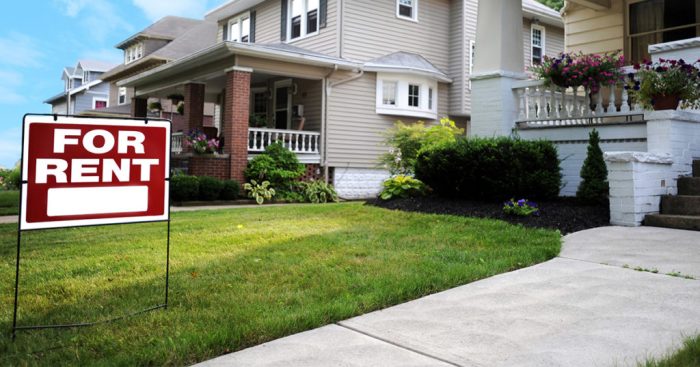Single Family House for Rent by Owner
Market Analysis of Single-Family Homes Rented by Owners
Single family house for rent by owner – The market for single-family homes rented directly by owners presents a dynamic landscape influenced by various factors, including location, property condition, and prevailing economic conditions. Understanding current trends is crucial for both landlords and prospective tenants.
Current Market Trends
The current market shows a fluctuating demand for owner-rented single-family homes. In areas with strong job growth and limited new construction, competition for these properties remains high. Conversely, in markets experiencing economic slowdown, vacancy rates might increase. Owner-occupied rentals often offer a more personalized experience, appealing to tenants seeking a greater sense of community and direct communication with the landlord.
Finding a single family house for rent by owner can be a great way to secure comfortable, private living space. However, if you’re on a tighter budget or prefer a more communal environment, consider the alternative of renting a room in a house, as detailed in this helpful guide: renting a room in a house. Ultimately, the best choice depends on your individual needs and preferences, but exploring both single-family homes and shared housing options offers a wider range of possibilities.
However, the lack of professional property management can sometimes be a deterrent.
Geographical Areas with High Demand
High-demand areas typically correlate with strong employment sectors, good school districts, and desirable amenities. Coastal cities, suburban areas near major employment hubs, and regions with a robust economy usually see increased demand. For example, areas surrounding technology centers often experience high demand due to the influx of tech workers. Conversely, areas with declining industries or limited job opportunities might have lower demand.
Rental Price Comparison: Owner-Rented vs. Agency-Managed
Generally, owner-rented properties tend to be slightly more affordable than those managed by agencies. Agencies often incorporate management fees into the rental price, which can increase the overall cost. However, this difference can vary depending on location, property condition, and the level of services provided by the agency.
Average Rental Rates Across Three Cities
The following table compares average rental rates in three diverse cities, illustrating price per square foot and included amenities. Note that these are average figures and can fluctuate based on location within the city and specific property features.
| City | Average Price per Sq. Ft. | Amenities |
|---|---|---|
| Austin, TX | $2.50 | Appliances, yard maintenance |
| Denver, CO | $3.00 | Appliances, parking, sometimes yard maintenance |
| Seattle, WA | $3.50 | Appliances, parking, often including utilities |
Advantages and Disadvantages of Renting from an Owner: Single Family House For Rent By Owner
Renting directly from a homeowner offers a unique set of advantages and disadvantages compared to renting through a property management company. Understanding these aspects is crucial for both renters and landlords.
Benefits for Renters
Choosing an owner-rented property can offer several benefits. Renters often appreciate the personalized experience, quicker response times to maintenance requests, and potentially lower rental costs. Direct communication with the owner can foster a stronger sense of community and build a more positive landlord-tenant relationship.
- Potentially lower rent
- Faster response to maintenance requests
- More personalized experience
- Direct communication with the landlord
Potential Drawbacks for Renters
However, renting from an owner also carries potential drawbacks. Owners might lack the expertise or resources of a professional management company, leading to slower maintenance responses or less efficient handling of tenant issues. The lack of a formal process for handling disputes can also be a concern.
- Potential for slower maintenance responses
- Less formal dispute resolution process
- Lack of professional management expertise
- Possible inconsistencies in maintenance or repairs
Renter Experience Comparison
The renter experience varies significantly between owner-managed and professionally managed properties. Professionally managed properties generally offer more standardized processes, quicker response times to maintenance, and established procedures for handling complaints. Owner-managed properties, while potentially offering lower rent and a more personalized touch, may lack the consistent professionalism and resources of a management company.
Legal and Financial Aspects of Renting a Single-Family Home
Navigating the legal and financial aspects of renting a single-family home is crucial for both landlords and tenants. Understanding the requirements and responsibilities ensures a smooth and legally sound rental agreement.
Legal Requirements for Landlords
Landlords must comply with federal, state, and local laws concerning fair housing practices, tenant rights, and property maintenance standards. These laws protect tenants from discrimination and ensure safe and habitable living conditions. Understanding and adhering to these regulations is paramount to avoid legal complications.
Financial Responsibilities of Landlords and Tenants

Source: rocketcdn.me
Landlords are typically responsible for maintaining the property’s structural integrity and ensuring essential systems function correctly. Tenants are usually responsible for paying rent on time, maintaining the cleanliness of the property, and reporting any necessary repairs. A well-defined lease agreement clearly Artikels these responsibilities.
Lease Agreements and Essential Clauses
A lease agreement is a legally binding contract that Artikels the terms and conditions of the rental agreement. Essential clauses include the rental amount, payment schedule, lease duration, tenant responsibilities, landlord responsibilities, and procedures for addressing disputes. A well-drafted lease protects both parties’ interests.
Sample Lease Agreement
A sample lease agreement would include sections for identifying the parties involved, specifying the property address, defining the rental period, outlining the rental amount and payment terms, detailing the responsibilities of both landlord and tenant (including maintenance and repairs), addressing late rent penalties, outlining eviction procedures, and including clauses regarding pets, subletting, and property damage. It’s crucial to consult with legal counsel to ensure the agreement complies with all applicable laws.
Marketing and Finding Tenants
Effectively marketing a single-family home for rent requires a multi-pronged approach, utilizing both online and offline channels to reach a broad pool of potential tenants. A compelling listing is crucial for attracting qualified renters.
Effective Advertising Strategies
Effective strategies include creating high-quality photographs and videos showcasing the property’s best features, writing detailed and accurate property descriptions highlighting key selling points and lifestyle benefits, and utilizing targeted advertising on online platforms to reach specific demographics.
Suitable Online and Offline Platforms
Online platforms such as Zillow, Trulia, Craigslist, and social media groups are effective for reaching a wide audience. Offline methods include placing “For Rent” signs in the neighborhood and utilizing local real estate networks.
Creating a Compelling Property Listing
A compelling listing should include high-quality photos, a detailed and accurate description of the property’s features, amenities, and neighborhood highlights, clear rental terms, and contact information. The listing should also be optimized for search engines to increase visibility.
Sample Advertisement
A sample advertisement might read: “Charming 3-bedroom, 2-bathroom single-family home in desirable neighborhood. Large fenced backyard, updated kitchen, hardwood floors. Close to parks, schools, and shopping. Rent: $2,500/month. Available immediately.
Contact [phone number] or [email address] for more information and to schedule a viewing.” Accompanying high-quality photos would showcase the home’s interior and exterior features, emphasizing its attractive qualities and lifestyle benefits.
Tenant Screening and Selection
Thorough tenant screening is essential to mitigate risks and ensure a positive rental experience. A comprehensive process helps landlords select responsible and reliable tenants.
Importance of Thorough Tenant Screening
Thorough tenant screening protects landlords from potential problems such as non-payment of rent, property damage, and disruptive behavior. It allows landlords to make informed decisions about who they rent to, reducing the likelihood of negative outcomes.
Steps in a Comprehensive Tenant Screening Process
A comprehensive process typically involves checking credit reports, verifying income and employment history, conducting background checks, and verifying previous rental history. This multi-faceted approach provides a holistic view of a prospective tenant’s reliability.
Essential Documents to Request, Single family house for rent by owner

Source: letsbegamechangers.com
Essential documents include a rental application, proof of income (pay stubs, tax returns), identification, and previous landlord references. These documents provide necessary information to assess a tenant’s suitability.
Tenant Screening Checklist
A checklist might include: Obtain rental application, verify employment and income, check credit report, conduct background check, check previous rental history, verify references, review application materials, make final decision.
Property Maintenance and Repairs
Effective property maintenance is crucial for maintaining a positive landlord-tenant relationship and preserving the property’s value. Clear communication and a well-defined process for handling repairs are essential.
Common Maintenance Issues and Solutions
Common issues include plumbing leaks, appliance malfunctions, HVAC problems, and exterior maintenance needs. Solutions involve prompt repairs by qualified professionals, regular inspections, and preventative maintenance.
Responsibilities of Landlords and Tenants
Landlords are typically responsible for major repairs and maintenance related to the property’s structure and systems. Tenants are generally responsible for minor repairs and keeping the property clean and in good condition.
Handling Maintenance Requests Efficiently
Efficiently handling requests involves establishing clear communication channels, prompt response times, and a system for tracking repairs. This ensures tenant satisfaction and prevents minor issues from escalating into major problems.
Sample Maintenance Log
A sample maintenance log would include columns for: Date, Issue reported, Tenant name, Description of problem, Action taken, Date of completion, Notes. This log helps track repair requests and maintain a record of communication with tenants.
Managing the Rental Relationship
Maintaining a positive landlord-tenant relationship requires clear communication, fair dispute resolution, and proactive problem-solving. A well-defined communication plan fosters trust and cooperation.
Effective Communication Strategies
Effective strategies include establishing regular communication channels (email, phone, text), responding promptly to inquiries, providing clear expectations, and actively listening to tenant concerns. Open and respectful communication builds a strong foundation for a positive relationship.
Handling Tenant Complaints and Disputes
Fairly handling complaints and disputes involves active listening, clear communication, and a willingness to find mutually agreeable solutions. Mediation or arbitration may be necessary in some cases. Documenting all communication and agreements is crucial.
Strategies for Maintaining a Positive Relationship
Strategies include being responsive to maintenance requests, respecting tenant privacy, adhering to the terms of the lease agreement, and fostering a sense of community and mutual respect. Treating tenants fairly and professionally contributes to a positive relationship.
Communication Plan
A communication plan might include: Weekly email updates, prompt response to maintenance requests within 24 hours, monthly property inspections, annual lease review, and established procedures for handling complaints and disputes. This plan ensures consistent and effective communication.
FAQ Explained
What are the typical lease terms for a single-family home?
Lease terms vary, but common lengths are 6 months, 1 year, or 2 years. Negotiation is possible depending on market conditions and landlord preference.
How much security deposit is standard?
Security deposits typically range from one to two months’ rent, depending on local laws and landlord policies.
What if a tenant damages the property?
The lease should Artikel responsibilities for damages. The security deposit can cover repairs up to its amount; additional costs may be pursued legally.
What are my responsibilities regarding repairs?
Your responsibilities depend on local landlord-tenant laws and the lease agreement. Generally, you’re responsible for structural repairs and major system malfunctions.




















